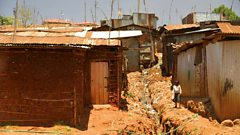
How the Outernet is connecting schools in Kenya
The system that can provide data and create Wi-Fi hotspots in remote parts of the world.
Around two-thirds of the world's population still has no internet access - so how can the poorer and more remote parts of the world get connected?
The answer could be through the Outernet - a system providing content beamed down to earth via satellite and picked up by antenna-fitted receiving equipment on the ground generating local Wi-Fi hotspots.
The hotspots then enable users to download data on their smartphones or computers for later use.
����ý Click's Spencer Kelly went to see the system in action at a school in Kenya and met the entrepreneur behind the idea, Syed Karim.
The system does not provide a full internet service but aims to create a "core archive" of the world's most valuable knowledge, culled from websites including Wikipedia and Project Gutenberg, a collection of copyright-free e-books. Content is updated periodically.
It can also provide more time-sensitive content - including news bulletins and disaster alerts - that can be updated several times an hour.
Duration:
This clip is from
More clips from 28/03/2015 GMT
-
![]()
Buyers’ guide: LG, Moto and Pebble smartwatches
Duration: 03:11
-
![]()
App helping locals improve slum life
Duration: 03:51
-
![]()
Tech hacks: Paper clip to smartphone stand
Duration: 00:15
-
![]()
Watchmakers embrace wearable tech
Duration: 02:51









